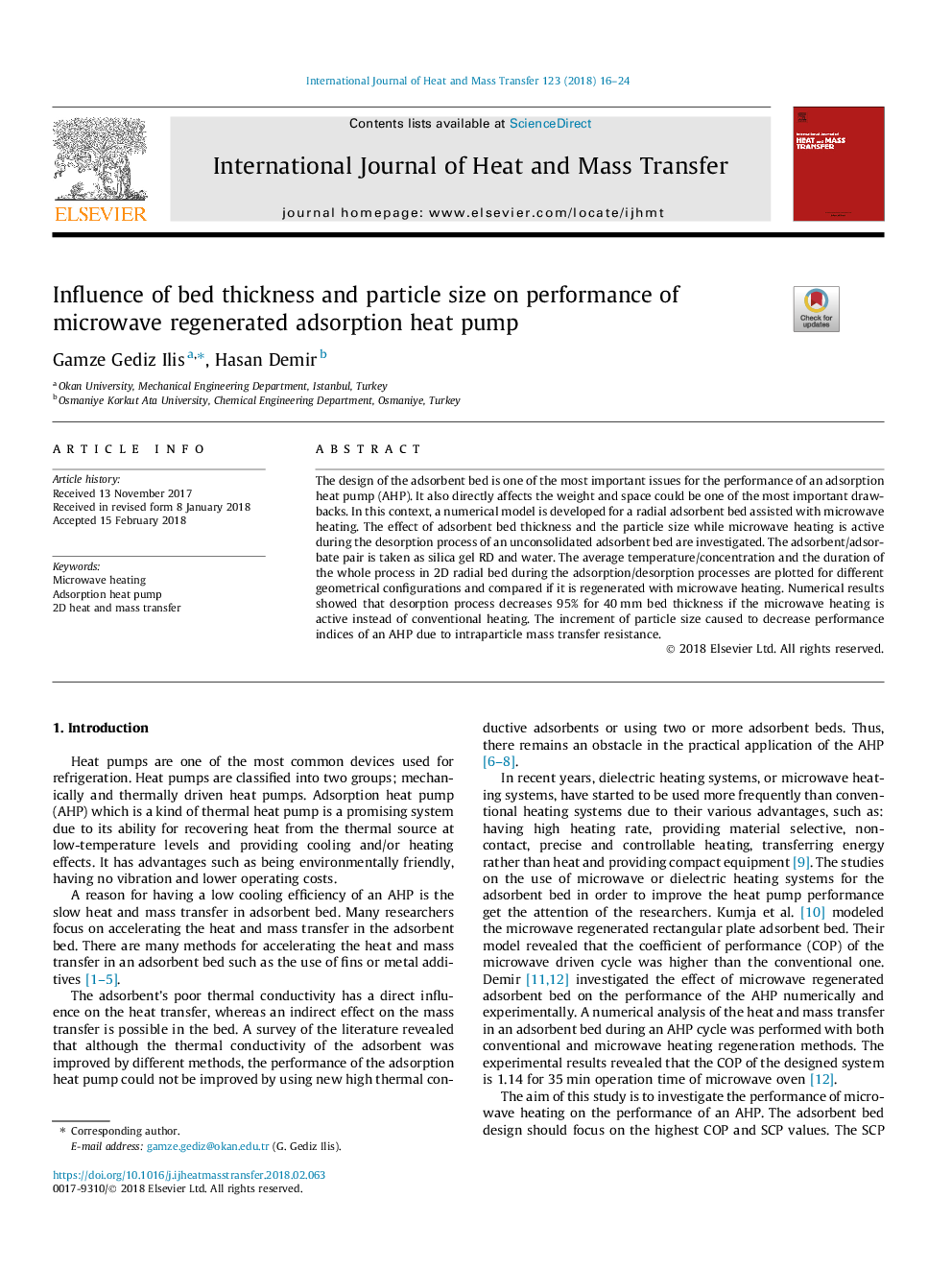| Article ID | Journal | Published Year | Pages | File Type |
|---|---|---|---|---|
| 7054189 | International Journal of Heat and Mass Transfer | 2018 | 9 Pages |
Abstract
The design of the adsorbent bed is one of the most important issues for the performance of an adsorption heat pump (AHP). It also directly affects the weight and space could be one of the most important drawbacks. In this context, a numerical model is developed for a radial adsorbent bed assisted with microwave heating. The effect of adsorbent bed thickness and the particle size while microwave heating is active during the desorption process of an unconsolidated adsorbent bed are investigated. The adsorbent/adsorbate pair is taken as silica gel RD and water. The average temperature/concentration and the duration of the whole process in 2D radial bed during the adsorption/desorption processes are plotted for different geometrical configurations and compared if it is regenerated with microwave heating. Numerical results showed that desorption process decreases 95% for 40â¯mm bed thickness if the microwave heating is active instead of conventional heating. The increment of particle size caused to decrease performance indices of an AHP due to intraparticle mass transfer resistance.
Related Topics
Physical Sciences and Engineering
Chemical Engineering
Fluid Flow and Transfer Processes
Authors
Gamze Gediz Ilis, Hasan Demir,
